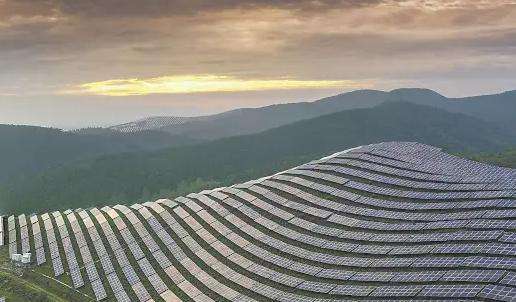The generator current is 5.5 A.
The voltage of an 800 watt solar panel is about 18 V, the current is 5, 5A and the light is on about 8 hours a day, but the current will be very low in the morning and evening and cannot reach full power 5.5A.
The effective lighting duration of an 800 watt solar panel is different in each area, so if the full power of 100 W is multiplied by 4 hours, the total energy production is approximately 400 W or 0.4 kilowatt hours of electricity. Installing photovoltaic panels requires adjusting the angle and direction so that the solar panels can fully receive sunlight and perform optimally. If it is installed randomly, it will affect the efficiency of power generation.
1. The voltage of a single solar cell is generally 0.4-0.7V. A common solar cell module ist composed of 36/54/60/72/96 cells connected in series, and the voltage is 0.4 ~ 0.7 V. 18/27/30/36/48 volts approximately.
2. It should be noted that the voltage of small divided cells is always the same as that of a single cell. -
3. Since they are connected in series, the cell and component current is typically 4 to 5 amps for 5-inch cells and 7 to 8 amps for 6-inch cells.
Detailed information:
1. Solar cells directly generate electricity by photoelectric effect or photochemical effect. Device that converts light energy into electrical energy. Crystalline silicon solar cells that work with the photoelectric effect are the most widespread, while thin-film cells that work with the photochemical effect are still in their infancy.
2. A solar cell is a componentphotovoltaic which can convert energy. Its basic structure is formed by joining P-type and N-type semiconductors. The most basic material of the semiconductor is "silicon", which is non-conductive, but if different impurities are mixed in the semiconductor conductor, it can be transformed into P-type and N-type semiconductors, and the P-type semiconductor then has a hole.
3. Compared to N-type semiconductors, there is an additional potential difference between free electrons to generate current. Therefore, when sunlight shines on them, the light energy excites the electrons in the silicon atoms, thereby generating electrons. and by convection, these electrons and holes are affected by the built-in potential, are attracted by the N-type and P-type semiconductors respectively, and gather at both ends.
4. At present, if the outside is connected with electrodes to form a loop, this is the principle of energy production by solar cells.
1. Open circuit voltage
(1), open circuit voltage UOC: that is, the solar cell is placed in AM1.5 spectrum conditions and light source intensity of 100 mW/. cm2, and open circuits at both ends When, the output voltage value of the solar cell.
2. Short circuit current
(1) ISC short circuit current: The solar cell is placed under AM1.5 spectrum conditions and a light source intensity of 100 mW/cm2. At Output End The value of current flowing through both ends of the solar cell during a short circuit.
3. Maximum loss Output power
(1) The operating voltage and current of the solar cell change with the load resistance. The volt-ampere of the solar cell can be obtained by creating a curve of the voltage valueson and operating current. corresponding to different resistance values.
(2) If the selected load resistance value can maximize the product of output voltage and current, the maximum output power can be obtained, represented by the symbol Pm. The working voltage and working current at this time are called optimal working voltage and optimal working current, which are represented by the symbols Um and Im, respectively.
Reference documents:
Baidu Encyclopedia-Solar Cells













